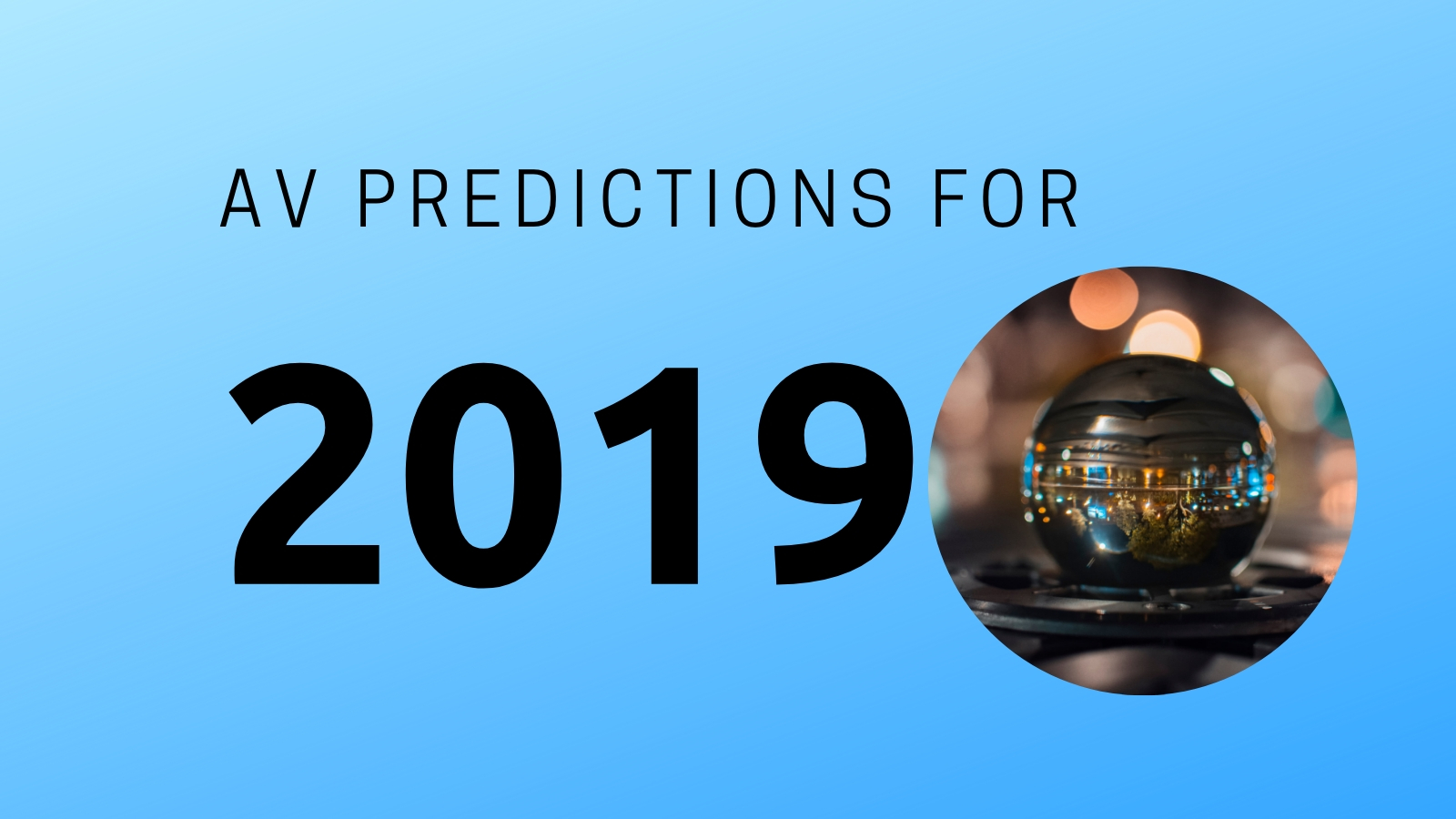A new year is filled with optimism and possibilities. It's the chance for a fresh start and new inventions.
So what will 2019 bring? 5G galore? 8K as a standard? Adoption of AVoIP across the world? Unfortunately I don't have a crystal ball to give you a definitive answer, but here's what #AVTweeps had to say about the upcoming year.
Kevin Smith, Director of Integrated Systems Sales, Shure
Software—and more specifically, software designed for remote monitoring and control—will continue to stake its claim in the AV industry in 2019. From convention centers and hotel conference rooms, to local city councils and government buildings, these spaces are increasingly filled with complex equipment and gear. Technical staff are often challenged to be in two places at once to manage each room—something that simply isn’t possible. In 2019, intelligent software solutions will continue to take hold, allowing IT managers to assist with remotely monitoring the hardware so it needs less attention.
Kristin Roubie, Senior Channel Sales Manager, Elo
In 2019, the world of AV will continue to move to a personalized and self-service environment that draws from the experiences we live everyday as consumers. For example, as consumers we expect a mobile-first, interactive, and ease-of-use world. Historically, the AV industry has been somewhat slow to implement interactive displays and has opted for static signage instead. However, given the mobile world we live in, consumers in all walks of life expect an interactive experience no matter where they are—from retail stores and restaurants to corporate headquarters and schools. As such, the AV industry will continue moving towards personalization and self-service to empower customers and employees alike, making it easier to interact and achieve personalized results through activations like beacons, listen-and-learn activations, and real-time interactive displays.
Chuck Wilson, Executive Director, NSCA
I think that 2019 might be the year that AV integrators start focusing on acquiring IT, life safety, and security firms—or, at a minimum, really build up skill sets in those areas so they can do so in the future. Finding, retaining, and training talent will remain our number one barrier to growth in this area—and in other areas. I also think that a cybersecurity breach will likely emerge, impacting one of our common network applications to the point that it will make national headlines.
Josh Rush, Senior Vice President of Marketing and Products, Audinate
At long last, 2019 will be the year that networking becomes the norm for the AV industry. Breakthroughs on the product side will make networked audio and video more pervasive across many new applications—enabling customers and integrators to do things that weren’t even possible in the analog world. In addition, 2019 will be the year that IT departments finally embrace networked AV products. The combination of new IT-focused software and services, and the on-going outreach and education toward the IT manager, will help alleviate their concerns and finally bridge the divide between AV and IT.
Frank Pellkofer, Co-Founder and CEO, Utelogy
For 2019, we will see AV continue to transition to a more IT-centric platform for the delivery of video and unified communications services. With this comes the need to deliver a higher, enterprise-grade level of service, so it’s creating new opportunities for traditional integrators, while it opens the door for IT integrators and managed service providers.
Traditional AV has been mainly product driven, with a focus on large capital projects. However, this new IT-centric world provides significant opportunities for AV/UC as-a-service.
We’ve witnessed how data and analytics has changed our world. With monitoring, reports and analytics, service providers and end users can take advantage of operational efficiencies and improved decision making, but converting it into meaningful business analytics might be a little premature for many in 2019.
Laura Moorhead, VP of Sales, Neurilink
In 2019, we anticipate continued growth in huddle and team rooms—creating simple and easy-to-use meeting rooms that facilitate collaboration within the organization continues to be a strong trend. Room schedulers that help facility planners with analytics on room usage is also very popular. Adapting our work environments to best facilitate how people want to work, whether remotely or in the office, is essential. By using standards and understanding the use-case of how companies like to work, we can provide our customers with exceptional experience.
Matthew Pulsipher, Product Manager, DVIGear
In 2019, we expect to see increased adoption of SDVoE-based signal distribution systems—as they deliver better performance, versatility and value to customers than traditional AV matrix switchers.
Michael Wiener, President and CEO, Vanguard LED Displays
Vanguard anticipates continued strong growth in the LED video display business as projection continues to be replaced by LED video displays on a large scale.
Wallace L. Johnson, CTS, Principal. WLJ Consulting
My AV prediction for 2019 is that companies will invest more in talent development. If there is a battle cry in the workplace today—and especially in our industry—is that finding, attracting, and retaining talent is tough and competitive.
With this challenge, AV companies will focus on ensuring that the talent they have they can retain and grow within the organization by investing in them. Because open market talent is limited, the recruitment of new hires will come from other industries. For this to be successful AV companies will develop or partner with training programs that will help these new hires transition to our industry and improve their skills rather than recruiting and hiring pricey talent from competitors.
Tim Boot, Director of Digital Product Experience, Meyer Sound
2018 was a successful year for open standards in the pro AV industry, and we think that 2019 will be just as successful. Manufacturers under the umbrella of the Avnu Alliance launched Milan, a user-driven deterministic network protocol for professional media transport built on audio video bridging (AVB). We’ll see the opportunity for products released in the market built on Milan, products that are interoperable and have redundancy capabilities as well as the best signal synchronization and timing performance.

